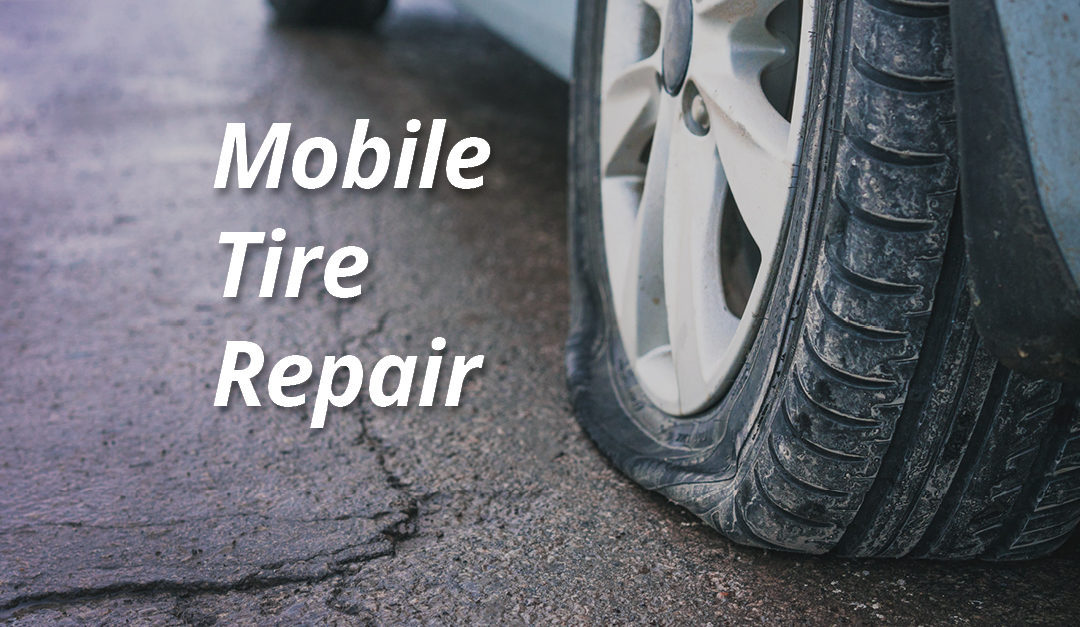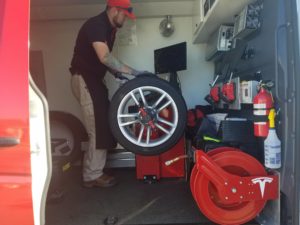Relied On Mobile Tire Service Las Vegas - On-Time Solutions
Relied On Mobile Tire Service Las Vegas - On-Time Solutions
Blog Article
Tire Service: Proven Techniques for Optimum Tire Maintenance and Treatment
From making sure proper tire stress to normal turning and positioning, there are proven methods that can substantially expand the life-span of your tires and improve general driving experience. Allow's delve right into the globe of tire solution and discover the tricks to maintaining your tires in superior form for the lengthy haul - Mobile Tire Service Las Vegas.
Relevance of Tire Pressure
Correct tire pressure is a critical consider making certain optimal automobile performance and safety and security when driving. Maintaining the advised tire stress levels given by the producer supplies numerous advantages. Ample tire pressure promotes far better gas performance, as under-inflated tires can lead to increased rolling resistance, creating the engine to work more difficult and eat even more fuel. Right tire stress ensures also step wear, improving tire long life and saving cash in the lengthy run by delaying the need for early substitutes. Additionally, properly inflated tires add to boosted handling and stopping capabilities, important for safe driving in different road problems. Over-inflated tires, on the other hand, can cause decreased grip and a harsher experience. On the other hand, under-inflated tires are vulnerable to overheating, which can lead to blowouts and accidents. Frequently readjusting and inspecting tire pressure, especially eventually journeys, is a simple yet efficient way to enhance automobile efficiency, prolong tire life-span, and prioritize safety on the road.
Tire Turning Guidelines
When considering tire rotation standards, it is vital to recognize the relevance of this maintenance job in taking full advantage of tire life expectancy and keeping ideal lorry efficiency. Tire turning includes changing the placement of each tire on an automobile to make certain also tread wear. Front tires often tend to wear quicker than back tires due to steering forces, making normal turning critical for well balanced wear patterns. The advised turning pattern varies depending upon whether a car is front-wheel, rear-wheel, all-wheel, or four-wheel drive. Normally, tires ought to be rotated every 5,000 to 7,500 miles, or as advised in the vehicle handbook. Disregarding tire turning can lead to unequal wear, influencing handling, traction, and potentially compromising automobile safety and security. By adhering to proper rotation standards, chauffeurs can prolong the life of their tires, improve fuel performance, and boost total driving experience. Routine rotation is an easy yet reliable maintenance technique that contributes considerably to tire longevity and automobile efficiency.

Advantages of Wheel Positioning
Making certain appropriate wheel placement after tire turning is vital for maintaining balanced wear patterns and maximizing automobile efficiency. Wheel positioning describes the adjustment of the angles of the wheels to the maker's specifications. Among the essential benefits of wheel positioning is improved steering and handling feedback. When the wheels are correctly aligned, it minimizes steering initiative, guaranteeing a smoother and much more controlled driving experience. In addition, appropriate wheel alignment aids to prolong the life expectancy of your tires. Misaligned wheels can create unequal tire wear, resulting in premature tire substitute and boosted maintenance expenses.

Tire Tread Deepness Examine
Performing a routine examination of tire tread deepness is essential for maintaining safe driving problems and extending the life expectancy of your tires. The tread on your tires plays a crucial role in providing grip, especially in slippery or wet problems. description To check your tire try these out walk deepness, you can use a walk deepness scale or the cent test. The suggested walk deepness goes to the very least 2/32 of an inch. If the tread depth is below this threshold, it is time to replace your tires to make sure optimal performance and security when traveling. Uneven step wear can indicate problems with tire positioning, suspension, or pressure, highlighting the importance of regular walk deepness checks. Ignoring to monitor and maintain correct walk deepness can lead to reduced grip, longer stopping distances, and a raised threat of hydroplaning. By integrating tire walk deepness explore your regular maintenance schedule, you can drive with self-confidence understanding that your tires are in top problem.
Seasonal Tire Evaluation
Seasonal tire assessment is an essential facet of tire upkeep that ensures tires are prepared to deal with the difficulties presented by various weather condition conditions. In preparation for winter season, it is vital to inspect the tire pressure on a regular basis as cool temperature levels can trigger tire stress to go down. By performing regular seasonal tire evaluations, motorists can prolong tire visit this web-site life expectancy, enhance fuel performance, and most importantly, ensure a protected driving experience in differing weather conditions.
Verdict
To conclude, maintaining appropriate tire stress, rotating tires routinely, aligning wheels properly, monitoring walk deepness, and conducting seasonal assessments are necessary techniques for ideal tire care. By adhering to these shown approaches, drivers can guarantee their tires last much longer, perform far better, and contribute to overall vehicle security. It is very important to prioritize tire maintenance to stop crashes, boost gas performance, and lengthen the life expectancy of tires.
Ample tire pressure promotes far better gas performance, as under-inflated tires can lead to enhanced rolling resistance, creating the engine to work tougher and eat more fuel.When considering tire rotation standards, it is vital to recognize the value of this upkeep job in optimizing tire lifespan and keeping optimal car performance. Seasonal tire evaluation is a basic aspect of tire maintenance that guarantees tires are ready to encounter the obstacles positioned by various weather conditions. By performing regular seasonal tire inspections, motorists can extend tire lifespan, enhance fuel effectiveness, and most notably, make sure a secure driving experience in varying weather condition problems.
In conclusion, maintaining proper tire pressure, turning tires frequently, lining up wheels properly, checking walk deepness, and conducting seasonal examinations are necessary methods for ideal tire care.
Report this page